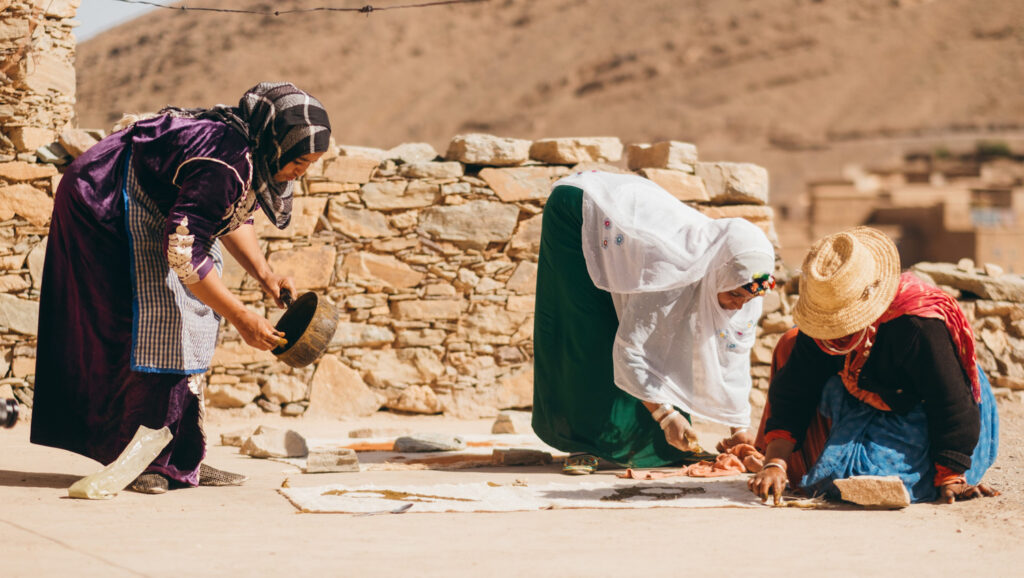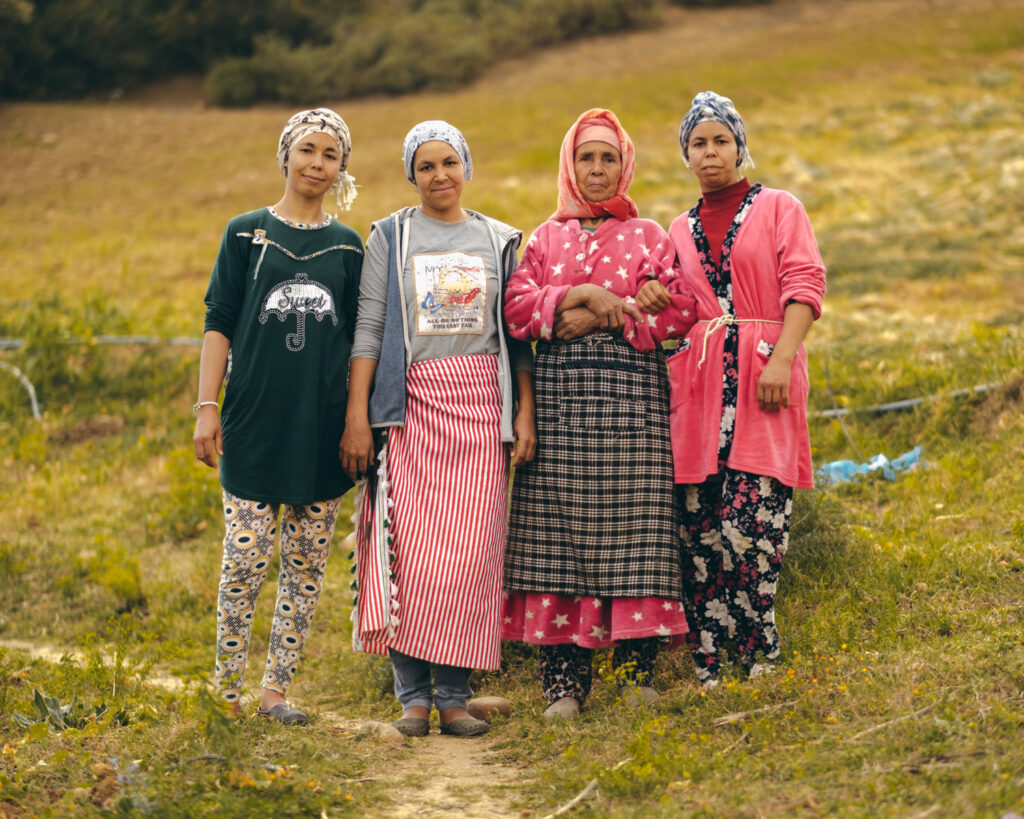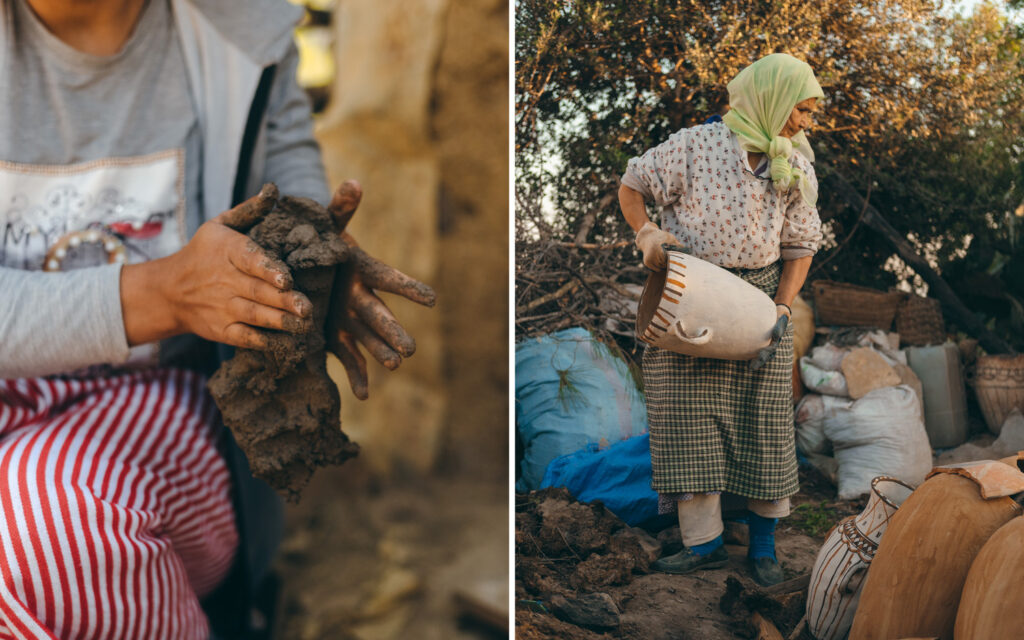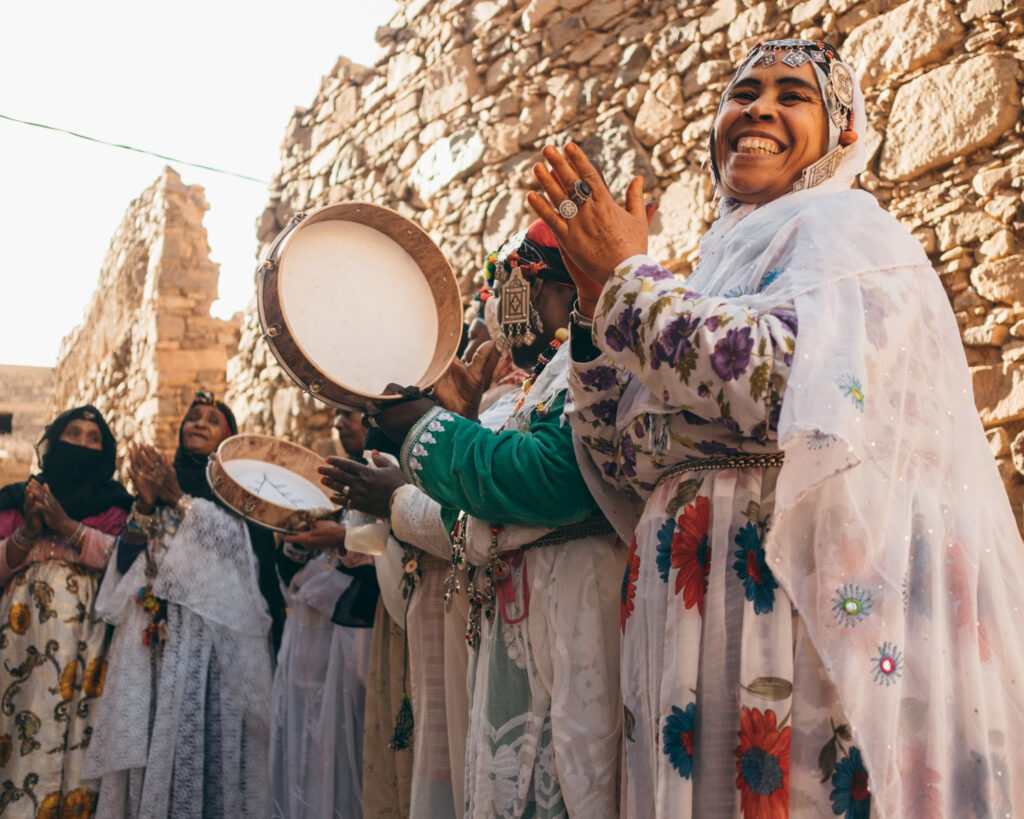Sumano is a social project which aims to revive artisan traditions practiced by the women of Moroccan tribes, including weaving, dyeing herbal fabrics and pottery painting.
We sat down with Marta, Alicia & Guillaume, from Sumano to find out more about how they are fighting to preserve traditional craftsmanship in Morocco.
Could you tell me about Sumano and how it got started?
Sumano is the dream of three friends with a passion for extraordinary craftsmanship in the verge of disappearance. It all started with a couple of trips to Morocco. We discovered that some artisans continue to create beautiful objects with incredible passion and devotion, following a tradition passed on from generation to generation. Sadly, we learned that those traditions are in danger of disappearing for various reasons.
That is how and why we created Sumano, trying to ensure the survival of these crafts, introducing these wonderful women, history, and crafts to the world and following our beliefs. A beautiful future for these crafts can be imagined respecting the environment, all living species, and attached to the use of natural materials found in their surroundings.
Sumano; both social company and association; aims to revive the traditional women’s crafts of Moroccan tribes, notably rural pottery from the Rif region, the art of weaving and vegetable dyeing. Its goal is to preserve and promote ancestral practices by creating more visibility around these original pieces. The name Sumano is a tribute to the first names of three women artisans (SUzanne, MAnuela and NOuky), our three grandmothers.
Sumano is also a laboratory for creative exchange, in which tradition blends with contemporary techniques, sources of new savoir-faire. For instance, clay is seen as an expressive and creative medium, opening up infinite possibilities. In selling unique pieces that are entirely handmade and by donating a part of profits to these communities, Sumano is committed to a vast project for safeguarding a unique cultural heritage.

How do you think the communities that you work with are changing through the involvement of this project?
They are becoming aware of the love, admiration and appreciation that a lot of people from everywhere have for them and their craft. That makes them prouder, more confident and gives them a reason to continue the tradition. They now want to create better pieces and they are trying to improve every step of the process.
In order to keep the tradition alive, we are truly convinced that these
women have to make it evolve themselves. We share contemporary and different
pottery, weaving and dyeing techniques with them, give them knowledge of the
design skills involved in the creation process.
Financially speaking, with all the attention that they are getting, they now see that they can make a living doing what they love.
How did you first make contact with the artisans and get them onboard?
We drove directly to the villages, we had to find out where the pottery or veils came from. The first time that we saw a piece of this kind of pottery, we asked the locals if they knew where it came from, some people said that there was a potter in her eighties in a little town in the Rif Mountains that still created it… not much information, but we had to start somewhere. The same thing happened with the weavers, we heard about some tribal territories, where women have been creating these magnificent veils, located in the central Anti-Atlas of southern Morocco. A region, filled with remote villages, so isolated that until 2001 it could only be reached by truck.

Prior to starting the project who were the artisans producing pottery for?
Prior to the project, the potters were not creating (we don’t think that they produce, they create or make each piece) pottery in regular basis for anyone for a while.
Women potters live in rural areas. They used to make these pieces to use them in their own household. Their pottery was intended only for domestic use as for storage of food, such as butter or honey, or to fetch water at the source and keep it fresh during long periods of drought.
Their pieces were traded within the neighborhood or sold at the souk before the introduction of plastic products. That was a game changer for them, plastic was cheap, durable and practical, everyone in the local villages stopped buying pottery and most of the work of the potters almost ended.

What were your biggest challenges in setting up the project?
For each craft, the biggest challenge as a foreigner is setting up a confident relationship with the communities of artisans we work with. It takes a lot of time. That is why the first year we have spent most of our time at the villages living with the artisans, we became very close and they know how much we love spending time with them, their families and the admiration that we have for they do. We have become a team, being both parts equally important, working and fighting together for the same goals.
You recently worked on a project with Dior. Could you tell us a little bit about that project and how it came about?
We were approached by Bureau Betak, the studio that produced the Dior show, their original idea was working with women artisans in Morocco. Maria Grazia Chiuri, the head designer for Dior, is known for her feminist point of view and collaborations with other women in all of her collections. They thought that, besides the beauty of all their crafts, the match between Maria Grazia and these ladies couldn’t make more sense being this collection inspired in Africa, African Crafts and women. It was a huge surprise for us since we started sumano only a year ago. Actually, this collaboration was our first project. Maria Grazia Chiuri collaborated with us on the scenography for the Dior Cruise show.
The weavers that we work with created all the textiles needed for the cushions, used for all seating in the runway, they were covered with artisanal weaves painted in henna, the decor of the show was also enhanced with Sumano’s pottery. A set of pottery wares was also conceived specially for their lunch, dinner and party celebrations held to mark the presentation of Dior’s collection in Marrakesh. It was also punctuated by an exclusive opera coat which opened the show, handwoven and handpainted by the weavers.
You are also organizing workshops to visit and learn from the artisans in person. This sounds like an amazing experience. How has it been received so far, both by the artisans and the guests?
They truly are an amazing experience.
The attendees spend a whole week at Mama Aicha’s, one of the potters. Hopefully in the near future more potters and their families will be able to host people at their houses. Now they also are part of the workshops, we drive to their houses and the attendees have the chance to experience with different clay and motifs, make some pieces with them and have some time With their family.
It is such a unique experience, during that week, they learn the whole process with the potter. From collecting the soil to make the clay to fire the pieces that they have hand built and painted with natural stones.
Technically speaking, the workshop opens a whole new world of possibilities for the potters. They realize that a potter doesn’t need to buy anything to create their pieces, they can get their own soil, grog, paint (stones), fuel for the fire (animal dong and straws), they can see that there is no need of using a wheel, just your hands, or oven (just a pit fire).
Some attendants, after the workshops, have started to collect soil and make their own clay, they have even done some pit fires back at their city (Berlin) instead of using their oven.
The experience is really enriching for both parts. The best part of it is being able to live with their family, appreciate their culture, simple life, and learn from them, it is such a privilege and such a unique experience.
It is a great time of learning and acceptance for both parts. It is also very rewarding to see that the potters finally get the attention and love that their craft and techniques deserve from people from all over the world that come here just to learn from them.

Could you tell me a bit about how the pottery is produced and some of the techniques that they use?
The techniques and the patterns that they use to decorate their pieces haven’t changed much since the origin. The pottery that is made nowadays by these women is still very similar to its origins (back to 6000 BC). The technique and tools that they use to create these pieces are basically the same that were used thousands of years ago, they are extremely rudimentary. This knowledge is transmitted from mother to daughter, as guardians of the tradition.
Each piece bears the individual mark of its maker and the tribe that the potter belongs to. Shapes and decorations – or lack of décor – are all unique and reflect both the origin and the dexterity of the potter.
These are the different stages of the creation of their pieces:
- Collecting
the clay: They collect their own soil, It is never too far from their house
surroundings. They transport, crush and sift the soil. After, the clay is
degreased by mixing it with grog or crushed pottery pieces, depending on the
region where the potter lives.
- Coil forming: The pottery is modeled without the
use of a potter’s wheel. In a first step, the basic structure of the piece is
built by hand, using traditional coiling, flattening or pinching techniques.
- Painting
& drying: The pieces are decorated on slip, using only natural pigments
from minerals or vegetables, and goat hair brushes. Ocher red comes from
diluted red clay or ground stone mixed with water. The dark, blackish-brown
color comes from a manganese oxide stone. Each tribe has its own patterns and
symbols. Furthermore, most of the creation of the pieces takes place in spring
and summer, during the hottest time of the year, making it even harder so the
pieces dry well before being fired.
- Firing:
The finished pieces are then fired in an open bonfire or primitive pit kiln. As
fuel, they use wood, if they live close to a forest, otherwise, olive twigs or
cow dung mixed with straw. The potter watches the fire, about 4 to 6 hours, and
covers the clay pieces with straw constantly. It takes about 12 hours of slow
temperature cooking.

Do you think that people are increasingly looking for transparency in the products that they purchase?
Of course, there is no option. Many people are already ready to buy less, a bit more expensive but with a spirit and a beautiful story behind.
We thrive to let people know:
- what’s
behind each product, that is to say where does it comes from, who made it,
what’s the story around it;- what’s inside: what is it made of, what
kind of natural material they used in order to be sure neither the material nor
the technique will harm the artisans or the environment;
- what’s inside: what is it made of, what
- what’s
beyond: in other words what do you bring to the communities thanks to your
purchase, to reconnect the buyer with the maker…
To give such information is a lot of work and we try our best to share it as clear as possible.
I imagine it can sometimes be a sensitive situation when it comes to working with artisans in less developed areas. People can make assumptions about exploitation etc. How easy is it to balance the ethics of the business?
The ethics of any business are primordial for us.
Sometimes, we feel that there is a rarified moral high ground, removed from the real concerns and real problems. People are generally too preoccupied with absolutist notions of what it means to be ethical, with overly general criticisms.
We all have to evaluate all our decisions from a moral perspective, but most of the time, people forget that it is not as simple as that, and we all need to take into account a lot of real parameters, like culture or environment, and be respectful with it.

What do you see for the future of Sumano?
We see more collaborations with extraordinary artisans located in other territories.
We started these two collaborations in Morocco, but we would love to connect with our roots, Spanish and French territories, keeping the same spirit as we started, looking for crafts that have almost disappeared and continue our sustainable vision (social & environmental).
We are truly convinced that beauty comes from diversity and that each territory expresses its singularity, related to its tradition and particular history, which helps to develop a specific know-how that only exists there.
Anything else that you would like to share? Funny stories from the experience?
We would like to share how fulfilling and rewarding is working and sharing our life with these wonderful artisans and their beautiful creations, any small achievement, change and improvement is celebrated and make us believe that there is hope for them and their craft.
We wouldn’t like to give the wrong impression though, and make people believe that it is easy and only see our little successes, behind them there is a lot of work, sacrifice, disappointment and frustration also.





